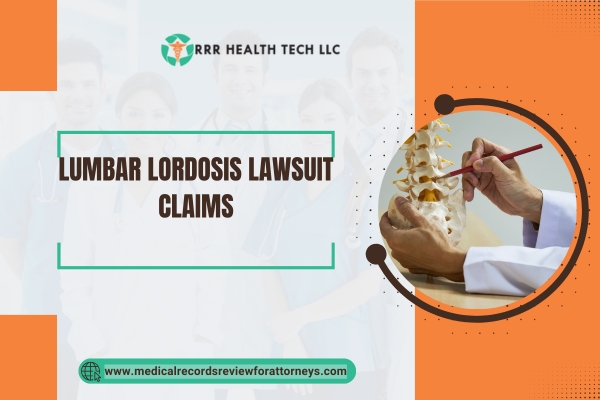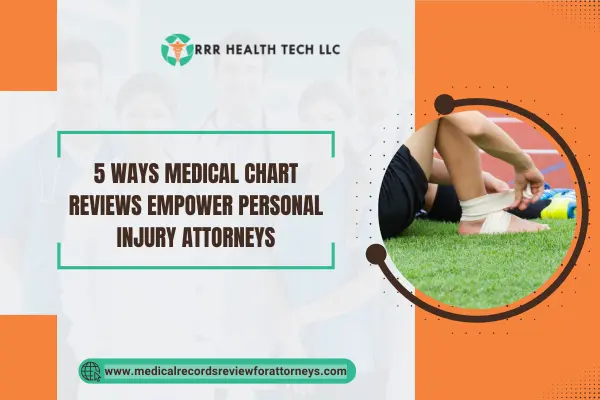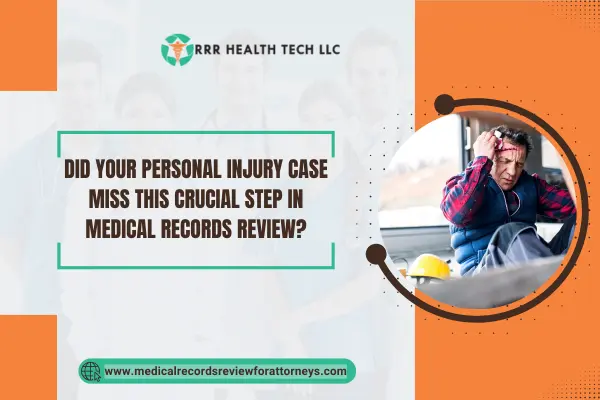
Introduction
Natural curves are part of the adult human spine, and the lumbar lordosis is one of them. It helps foster a balance and balance posture. However, when such natural curves are increased or decreased it could be the source of several health related problems. Medical specialists who deal with reviewing medical files need to know and understand the meaning of lumbar lordosis, especially if they are handling cases which require an understanding of spinal cord injuries, for personal injury or workers compensation cases. This article goes deeper into lumbar lordosis in relation to legal issues, case building and also how documentary review could be effective in building solid cases.
What is Lumbar Lordosis?
Definition and Anatomy
Lumbar lordosis is a normal spine curvature of the lumbar region–localized at the lower back. The inner part of this concave can help support and diffuse the weight and relieve some pressure caused by motions performed by an individual. In terms of normal measurement lordosis of the lumbar region ranges between 20 to 45 degrees.
Importance of Lumbar Lordosis
The arc of the lumbar segment of the spine is an important factor when it comes to standing upright as well as sitting. When such standard constructions of this arc are changed, there is bound to be pain, discomfort and at times loss of function, thus affecting someone’s quality of life.
Causes of Abnormal Lumbar Lordosis
Hyperlordosis
Hyperlordosis, or excessive curvature, can result from various factors, including:
- Obesity: Excess body weight can lead to a lot of extra pressure and stress being applied to the spine.
- Poor Posture: Chronic slumping while sitting or standing may result in an increase in the curvature of lordosis which may also lead to inflammation.
- Muscle Imbalances: The other possible contributor to hyperlordosis is weak abdominal muscles and also tightness in the hip flexors.
Hypolordosis
Hypolordosis, or reduced curvature, may be caused by:
- Degenerative Disc Disease: Trauma, age related changes in the disc tissues can deplete the disc in the lumbar region as well.
- Injury: Injuries in the spinal cord may inflict a shift in the natural convex configuration.
- Skeletal Disorders: Conditions like ankylosing spondylitis gethold of a person. This in the long run leads lordosis in getting formed.
Diagnosis of Lumbar Lordosis
Clinical Evaluation
A thorough clinical evaluation is essential for diagnosing lumbar lordosis. This typically includes:
- Medical History: Patient’s history, symptoms the patient had and also if the patient had diseases related to the spine.
- Physical Examination: Standing posture along with position, movement and special treatment indices.
Imaging Studies
X-rays, CT or MRI are performed to obtain direct radiography images of the curvature of the spine together with affections in other anatomical structures.
Treatment Options for Lumbar Lordosis
Conservative Treatments
- Physical Therapy: Customized exercises can boost and strengthen core muscles and promote good posture.
- Chiropractic Care: Normal curve can be achieved by correcting the spinal position.
- Pain Management: Some medications if used, or given in the form of injections can help reduce the pain.
Surgical Interventions
In severe cases, surgical options may be considered, including:
- Spinal Fusion: Surgery that permanently joins two or more vertebrae together to stabilize the affected spinal region.
- Laminectomy: Surgical excision of the vertebra which relieves pressure on the spinal nerves.
The Role of Medical Records Review in Legal Cases
Importance for Attorneys
For attorneys handling cases related to lumbar lordosis, a comprehensive medical records review is crucial. This process involves:
- Evaluating Medical History: Collecting detail of the patient’s past active medical history and any special treatment.
- Analyzing Diagnostic Imaging: X rays and MRIs are evaluated and the extent of the angle and axis of curvature is measured.
- Reviewing Treatment Plans: Making certain that the provided treatment fits the stated diagnosis.
Common Legal Cases Involving Lumbar Lordosis
- Personal Injury Claims: When involved in motor vehicle accidents or fall down injuries that could potentially have an impact on lumbar lordosis.
- Workers’ Compensation: Other industrial injuries to the spinal area.
Case Studies
Case Study 1: Personal Injury Claim
Overview of the Case: A 35-year-old male following a motor vehicle accident had a lumbar lordotic injury resulting in more lumbar lordosis than normal.
Challenges: The defense’s case was that they never sustained the injury at the time of the accident; hence this has created complexities in the claim.
Solutions: A review of the medical records in detail was done which showed the findings of the previous imaging studies, which were under normal curvatures, and this led to the support for the plaintiff.
Case Study 2: Workers’ Compensation
Overview of the Case: A 50 year old woman had been working as a heavy lifter which led her to suffering from back problems in the lower part lumbar lordosis.
Challenges: The employer was denying the claim while on the other hand the employee has a history of certain ailments.
Solutions: A more thorough examination of the medical file across baffled the claimants showing issues with their lumbar spine hence the claim was successful.
Conclusion
Involvement of reviewers of the medical records in all cases where there is a possibility of lumbar lordosis affecting the case is necessary, as it affects many legal issues. By understanding and analyzing past medical records of the clients, their medical imaging and treatment, attorneys can create better cases. This article has elaborated case analysis of clients with lumbar lordosis its causative factors, diagnosis, management options and legal considerations in reviewing medical records. Information is powerful and lawyers should use it to improve themselves and assist their clients more effectively.


